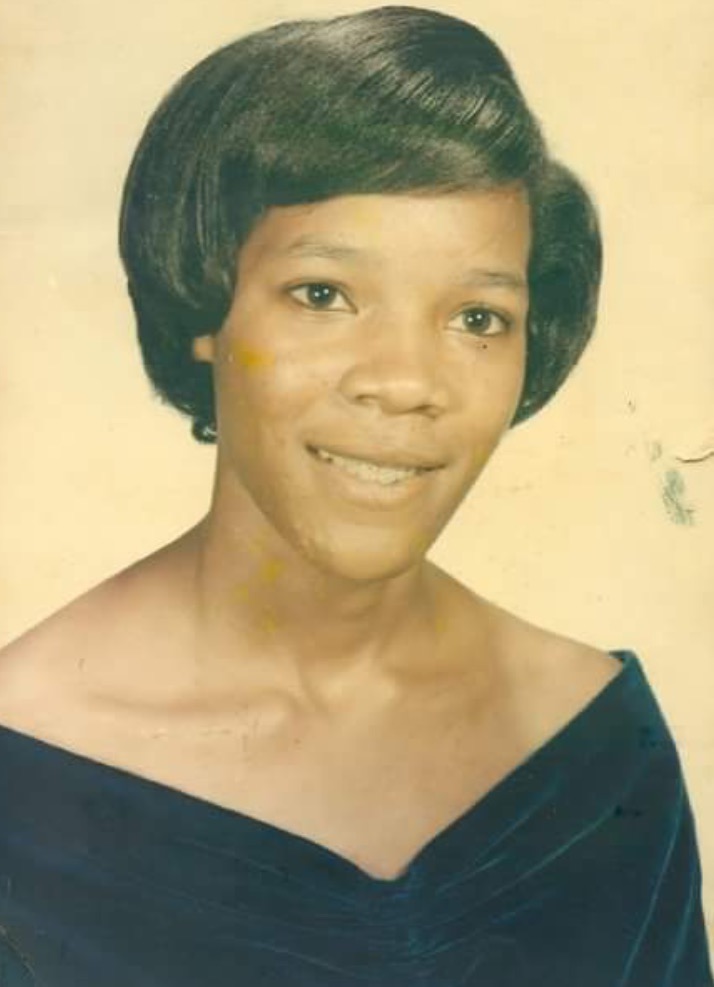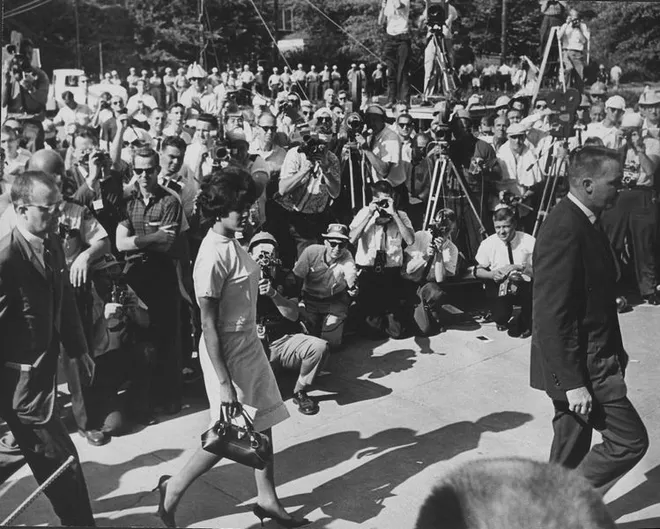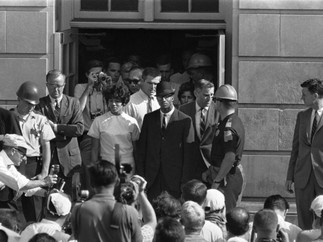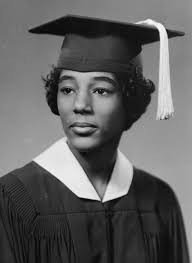Vivian Malone: Breaking Barriers at the University of Alabama in 1963
- T. Brookshire

- Dec 17, 2023
- 3 min read

June 11, 1963, was the date of what has become known as Wallace's "stand in the schoolhouse door." The University of Alabama campus was transformed into a scene of chaos when two black students, Vivian Malone and James Hood, attempted to cross the color line and register for classes. The pair was surrounded by federal marshals, camera crews, jeering students and state troopers wearing helmets and wielding clubs.
Born in Mobile, AL, and a student at HBCU, Alabama A&M University, she longed for a transfer to the university that could offer her the education she desired in Accounting.
On this day, under the unforgiving Alabama sun, Vivian stood with purpose, her dreams of pursuing accounting at the University of Alabama hanging in the balance. As she waited, the weight of history pressed upon her, the echoes of Brown v. Board of Education resonating through the tense air.
The University of Alabama adopted a policy to deny entry to Black students. However, a district judge ruled in favor of admitting them and President John F. Kennedy then federalized National Guard troops to force Wallace to back down.
In the shadow of Governor George Wallace's defiance, Malone, at 20 years old, epitomized courage. A young woman, coming of age, thrust into social and political movement that she didn’t even ask for.
The governor, a symbol of obstinacy, had appointed himself the University’s registrar, blocking the entrance to Foster Auditorium. The infamous spectacle became known as “stand at the School house door”. Surrounded by state troopers and scrutinized by the watchful eyes of national media, the governor remained steadfast in his resolve to uphold segregation. The governor pledged to uphold segregation in the state, coining the now infamous slogan of “Segregation now, segregation forever.”
Malone, alongside Hood, waited for over four and a half hours in a car, while Deputy Attorney General Nicholas Katzenbach along with 100 federal guardsmen confronted Wallace with federal court orders. Eventually, Wallace relented, and the doors of Foster Hall creaked open.



Malone and Hood were then escorted into Foster Hall, registered for classes, went to their dormitories, and ate in the cafeteria. But their journey was far from smooth.
In the corridors of the University of Alabama, Malone faced a chilling reception from her white peers. Like ghosts, they would silently slip out of classrooms when she entered, leaving her alone with her teacher and the federal marshals assigned to protect her. In the dormitory, the her fellow white students would suddenly scurry out of the bathroom as she stepped in, a daily reminder of the racism deeply ingrained in the hearts of some. She was more deeply hurt by the fact that the white students refused to make eye contact with her or even return her smile or a wave. She credited her solid upbringing and strong religious belief for the strength to challenge segregation, having set her mind simply on "just going to class and doing the best I could".
Through perseverance and prayer, Vivian Malone Jones would become the first Black student to graduate from the University of Alabama in 1965, earning her Bachelor of Arts degree in Business Management with a B+ average. After graduating, she moved to Washington and joined the U.S. Department of Justice as a staff member of its Voter Education Project.

Shortly afterward, she moved to Atlanta and took a position with the Environmental Protection Agency, where she was director of civil rights and urban affairs. She also helped pioneer the concept of environmental justice at the EPA regional office. She retired in 1996.
She remained active in civil rights and civic and community organizations, including the NAACP, the Southern Christian Leadership Conference, Atlanta's Ben Hill United Methodist Church and the National Council of Negro Women. Her alma mater endowed a Vivian Malone Jones Scholarship Fund and hung her portrait in the building that houses the College of Commerce and Business Administration.
Malone met her husband, Mack Jones, when, as a local student, the university hired him to be her driver. He later became an obstetrician.
Malone-Jones passed away in 2005.
Malone-Jones was recognized for her role in the school integration through numerous awards.
In 2000, she was awarded an honorary doctorate of humane letters from UA.
In 2017, a historical marker was installed at the Mobile County Health Department in honor of Malone-Jones. It was placed at the location of her childhood home and sits along the Dora Franklin Finley African-American Heritage Trail in Mobile, Alabama.
In 2018, a street in downtown Mobile was named in her honor.
With determination in her heart, Vivian Malone-Jones faced not only the challenge of academic excellence but also the stark reality of racial prejudice head on. Yet, her courage remained unshaken, a testament to the resilience of those who dared to defy an American system built on injustice.
Fun Fact: Vivian’s sister married former US Attorney General, Eric Holder.
Other Resources
NY Times | Vivian Malone Jones, 63, Dies; First Black Graduate of University of Alabama | https://www.nytimes.com/2005/10/14/us/vivian-malone-jones-63-dies-first-black-graduate-of-university-of.html






















Comments